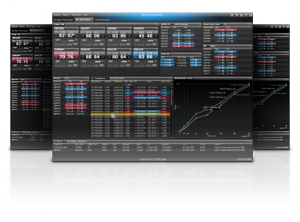Last week I was on the panel at the London Ajax Comet event along with a number of other people representing Comet products. Comet servers are nothing new and there are lots of options out there now, some open source, some free, some commercial, and more recently some as a service.
Some of my blogs relate to Liberator, but I don’t often talk about it directly, explain the different versions or describe what you can do with it.
Caplin Liberator is a commercial product that we sell, usually as part of a larger framework called Caplin Xaqua. Liberator was first developed in 2000 and has been used in many large deployments since then.

A few years ago we decided to release Liberator FE – a free edition of Caplin Liberator.
So what can you do with Liberator FE?
The short answer is ‘pretty much everything you can do with the commercial version’, but what is that and what are the differences?
Liberator FE comes with two APIs. Most people familiar with Comet will understand the idea of a JavaScript library that runs in the browser talking to a Comet server and exchanging information – Liberator of course provides this, it is called StreamLink for Browsers. Not all Comet servers provide server side integration APIs though. For some the model is ‘everyone is a client’, so even if something is conceptually a backend component it might still use the same API as the clients. Liberator has the concept of DataSources, as the name suggests these components provide the data. Clients can also provide data, but it is treated differently. Liberator FE provides a Java DataSource API.
So you might take the Java DataSource API and write an application that feeds data into Liberator that is then available for clients. The client application would be a web page using the StreamLink for Browsers JavaScript API to subscribe to the data that the DataSource is publishing. It will receive data in real time, as soon as it is published, and clients can also publish data back to the server – it is fully bidirectional.
What kind of applications can you develop? How long is a piece of string? You can use your imagination.. Caplin’s main focus is financial trading applications, but anything that could benefit from real time data or highly interactive experiences can be developed. Sports scores, chat and other social media applications, real time monitoring, games, whatever you can think of! We’d love to hear of other ideas.
So what can’t you do?
Liberator FE is a full blown version of Caplin Liberator, performance, scalability etc, it is all the same. However, you don’t get other language APIs, for example, .Net, Silverlight, C/C++. You don’t get two further integration APIs, for handling realtime permissioning and monitoring.
You also cannot use Liberator FE for a commercial application – it is against the license.
Liberator FE has been downloaded by a lot of people and we hope this is a good way for people to get familiar with Liberator and Comet technology – whether it is for a non-commercial project or as a way of easily evaluating Liberator for a commercial project.
So if you want to try out Comet, if you are interested in some of the things I blog about and want to try it out, Liberator FE is a good place to start! Let us know how you get on.
